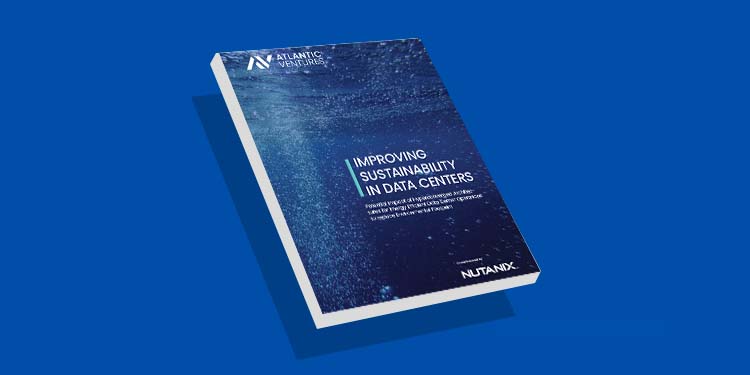What Is a Digital Carbon Footprint & How Can You Reduce Yours?
In the past, IT decisions were mainly influenced by cost and workload placement factors. However, the situation has changed due to the urgent threat of climate change, which can have catastrophic consequences.
Currently, promoting sustainability and protecting the climate have become critical priorities for businesses, and they will have a substantial impact on corporate governance in the coming years. As a result, executives at the highest level of organizations need to adjust their company's objectives to strive for carbon neutrality and actively contribute to the reduction of global warming.
What is a digital carbon footprint?
A digital carbon footprint refers to the environmental impact of digital technologies and online activities, including the emission of greenhouse gases (GHGs) and energy consumption associated with the use and operation of digital devices, networks, and services. It encompasses the carbon emissions generated throughout the lifecycle of digital technologies, from manufacturing and distribution to use and disposal.
Everything we do online or on our digital devices is part of that footprint, or impact, on the environment. According to Plan Be Eco:
If you use a streaming service on your TV for one or two hours a day every year, you use enough electricity to run your fridge for half a year.
Netflix’s carbon footprint was 1.1 million MT in 2020, equivalent to a city with 150,000 homes.
TikTok has the largest carbon footprint among social media applications. It emits as much as 2.63 grams of CO2 equivalent per minute of each active user. The number of registered accounts there has already exceeded one billion, so it generates huge carbon emissions.
It’s not just electricity usage that matters, either, especially when it comes to the carbon footprint of organizations. Water usage in the data center is a concern, and organizations are looking for smart ways to reduce both power and water consumption. They also need ways to reduce e-waste, which consists of electronic devices and other hardware, which contain toxic chemicals and hazardous materials that can leach into groundwater and soil.
Internet pollution and carbon emissions from data centers must be reduced because the carbon footprint of digital technologies, if left unchecked, could lead to serious environmental challenges.
How to reduce your carbon footprint
IT organizations can take several steps to reduce their digital carbon footprint. Here are some strategies they can implement:
Use energy-efficient hardware - Upgrade to energy-efficient servers, desktops, laptops, and networking equipment. Look for devices with low power consumption during operation and optimize power management settings to reduce energy usage during periods of inactivity.
Pare down with virtualization and cloud computing - Consolidate servers through virtualization to reduce the number of physical machines and their energy consumption. Embrace cloud computing to take advantage of shared resources and energy-efficient data centers.
Optimize data center operations - Implement efficient cooling systems, airflow management techniques, and regular maintenance of power distribution systems to improve energy efficiency.
Look to renewable energy sources - Invest in renewable energy sources like solar or wind power to generate electricity for data centers or other IT operations. Consider purchasing Renewable Energy Certificates (RECs) to support renewable energy projects.
Keep data storage and management efficient - Implement data deduplication and compression techniques to reduce storage needs and minimize energy consumption. Utilize efficient data management practices such as tiered storage and data lifecycle management.
Be responsible about disposal and recycling - Implement proper e-waste recycling programs to dispose of IT equipment and electronics responsibly. Ensure compliance with environmental regulations when disposing of electronic waste.
Adopt green procurement practices - Prioritize purchasing energy-efficient and environmentally friendly IT equipment. Consider the full lifecycle impact of products, including their manufacturing, use, and disposal.
Promote telecommuting and remote work - Telecommuting and remote work can reduce commuting-related emissions and energy consumption. Encourage the use of video conferencing and collaboration tools to minimize travel requirements.
Boost employee awareness and training - Educate employees about the importance of reducing the digital carbon footprint. Provide training on energy-efficient practices and encourage employees to adopt them.
Continually measure and monitor - Implement tools and systems to measure and monitor energy usage, carbon emissions, and overall environmental impact. Set targets and regularly assess progress to identify areas for improvement.
The environmental impact of computing
While computers have brought tremendous positive advancements to various aspects of life and business, these benefits are not without consequences. As of 2021, experts estimated the existence of approximately 7.2 million data centers worldwide. These data centers play a crucial role in meeting the extensive computing requirements of businesses, facilitating operations such as data storage, backup, networking, email services, website hosting, and more.
The sheer number of data centers poses a significant concern in terms of power consumption. Data centers vary in size, with many being massive facilities housing thousands or even tens of thousands of servers that consume electricity voraciously. The International Energy Agency has estimated that global data centers consume approximately 200 terawatt-hours (TWh) of electricity annually, accounting for nearly 1% of the world's total electricity demand.
Given the rising energy costs associated with data centers and the growing regulatory focus on environmental issues, organizations are faced with the challenge of finding greener and more sustainable operational approaches. Cloud storage, which heavily relies on vast data centers managed by hyperscalers, has a considerable environmental impact. The sustainability of cloud services hinges on the industry's efforts to develop and adopt more energy-efficient operational practices.
What is corporate digital responsibility?
Corporate digital responsibility refers to a company's commitment to conducting its digital operations in an ethical, responsible, and sustainable manner. It encompasses the company's actions and practices related to the use of digital technologies, data privacy, cybersecurity, environmental impact, and societal considerations. Corporate digital responsibility extends beyond legal compliance and encompasses proactive efforts to address social and environmental concerns associated with digital activities.
What is carbon net zero?
Carbon net zero, also known as net zero emissions or carbon neutrality, refers to the state in which a balance between greenhouse gas emissions produced and greenhouse gas emissions removed or offset is achieved. It means that the net amount of carbon dioxide (CO2) and other greenhouse gases released into the atmosphere is zero or effectively zero. Reduction measures include decarbonization, the use of clean energy sources, implementing energy-saving devices, and cutting down on resource usage in general.
Countries around the world are pledging to eliminate manmade greenhouse gases through reduction measures to bring the Earth’s atmosphere into balance again and stop climate change. Some nations, such as France, are aiming to be carbon-neutral by 2030, while others, such as the United States, are looking toward 2050 for that goal.
What is digital decarbonization?
Digital decarbonization is the process of reducing the carbon emissions and environmental impact associated with digital technologies and digital activities. It involves adopting sustainable practices, improving energy efficiency, and implementing environmentally friendly measures throughout the lifecycle of digital technologies, including their production, usage, and disposal. Furthermore, digital technologies themselves can contribute to this endeavor. For instance, digital communications, data analytics, and system automation software are helping power companies operate electrical grids much more efficiently.
How to reduce energy consumption in data centers
With data center energy consumption as a major culprit in an organization’s carbon footprint, here are some ways to create a sustainable data center by reducing energy consumption:
Virtualization and consolidation - Implement server virtualization to optimize resource utilization and reduce the number of physical servers. This consolidation reduces energy consumption by enabling multiple virtual machines to run on a single physical server.
Power management - Utilize power management features and tools to optimize energy consumption during periods of low demand or inactivity. Implement technologies like dynamic voltage scaling, frequency scaling, and server power capping.
Efficient data storage - Implement data deduplication, compression, and tiered storage strategies to reduce storage needs and minimize energy consumption.
Renewable energy integration - Explore opportunities to integrate renewable energy sources into data center operations. Install solar panels, utilize wind energy, or procure renewable energy from external sources to power data centers.
Energy monitoring and management - Deploy energy monitoring systems to track and analyze data center energy usage. Use this information to identify inefficiencies and implement corrective measures.
What does environmental, social and governance (ESG) refer to?
Environmental, Social, and Governance (ESG) is a framework used to evaluate a company's sustainability and ethical performance in three key areas:
The environmental factor involves assessing a company's impact on the environment. This includes factors such as carbon emissions, energy consumption, waste management, water usage, and the company's efforts towards environmental conservation and sustainability.
The social factor focuses on how a company interacts with and affects its stakeholders and society at large. It includes aspects such as employee relations, labor practices, community engagement, human rights, diversity and inclusion, product safety, and customer satisfaction.
The governance factor refers to the structure and practices of a company's leadership and management. This encompasses factors like board composition, executive compensation, shareholder rights, transparency, risk management, and adherence to ethical standards.
ESG has gained prominence as investors and stakeholders recognize that a company's performance in these areas can impact its long-term financial success and reputation. By considering ESG factors, investors aim to identify companies that demonstrate responsible and sustainable practices, which can mitigate risks, enhance performance, and align with broader societal goals.
How Nutanix can help you reduce your digital carbon footprint
We recognize the importance of infusing sustainability into everything we do, and that includes the products and solutions we develop.
Nutanix was a pioneer in the development of hyperconverged infrastructure (HCI), which allows organizations to converge their entire data center stack—including compute, storage, storage networking, and virtualization—and deploy it incrementally. Nutanix HCI technology supports lower power consumption by using software virtualization technology and web-scale design to minimize the amount of physical compute and storage resources needed. The physical design of the hardware eliminates the need for a SAN fabric, resulting in a smaller physical footprint. We have then pushed the power density within the rack design above industry standards to achieve a 68% improvement in consolidation.
Essentially, HCI means you can run your workloads on significantly less hardware, which in turn reduces power consumption, carbon emissions, and e-waste.
With our solutions, you can operate with less physical data center space, less electricity, and less water. Just by being our customer, you can reduce your overall carbon footprint.
Explore our top resources

Nutanix Makes Light Work Of Data Centre Move At JM Finn

Digging into Data Center efficiency, PUE and the impact of HCI


